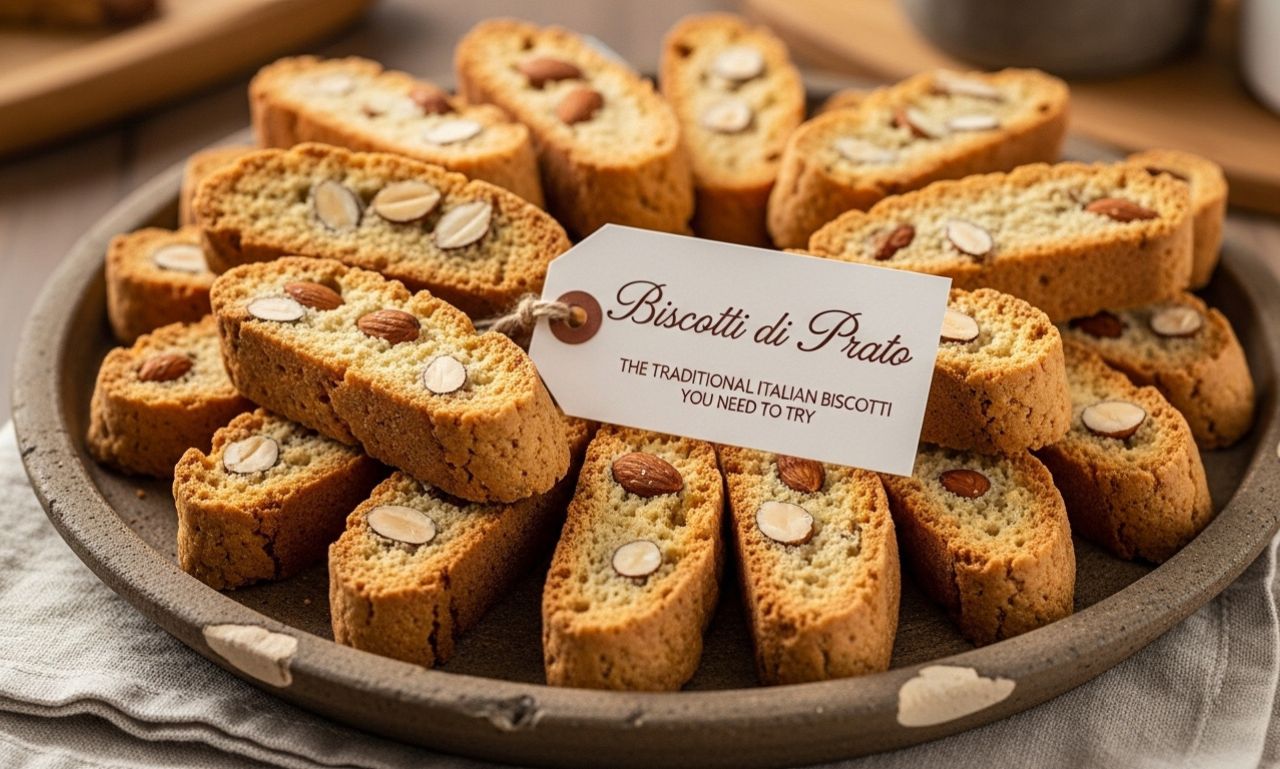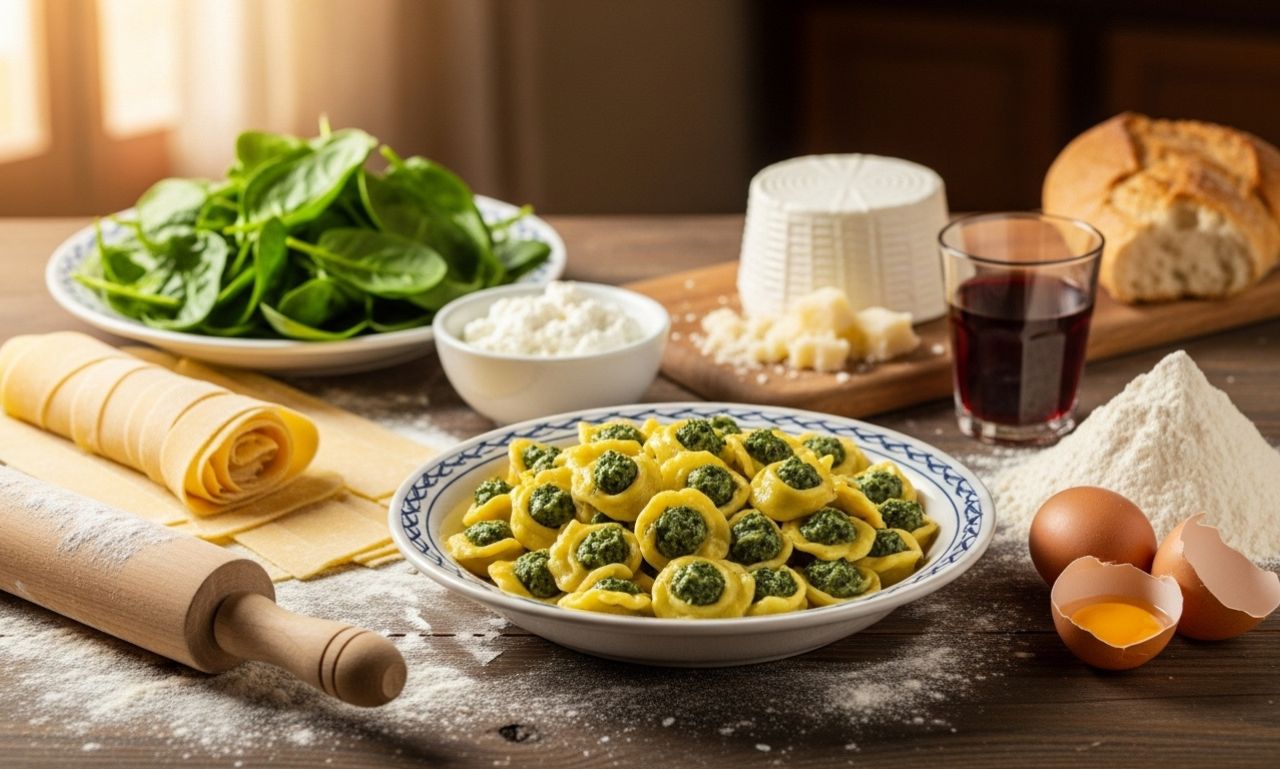Food
бишкоти ди прато: The Traditional Italian Biscotti You Need to Try

If you’ve ever indulged in a crunchy, sweet treat with your coffee or tea, chances are you’ve savored the delightful experience of biscotti. These twice-baked Italian cookies have won hearts around the globe, but few varieties compare to the authentic бишкоти ди прато. Originating from Prato, Italy, this traditional biscuit is more than just a snack; it’s a piece of culinary history.
Imagine taking a bite into its crisp exterior and discovering how beautifully it pairs with your favorite beverage. Whether you’re dipping them into espresso or enjoying them on their own, these little delights promise to elevate any moment. Join us as we delve deeper into what makes бишкоти ди прато so special and why you should add this tasty treat to your must-try list!
What is бишкоти ди прато?
Бишкоти ди прато is a delightful Italian treat that hails from the picturesque town of Prato, located in Tuscany. Known for its unique texture and flavor, this biscotti stands out among various types of cookies.
Unlike softer varieties, бишкоти ди прато is twice-baked to achieve a perfect crunch. It features almonds as a primary ingredient, giving it an exquisite nutty taste that pairs beautifully with coffee or tea.
The simplicity of its ingredients reflects traditional Italian baking practices. Flour, sugar, eggs, and whole almonds come together to create something truly special. Each bite offers not only sweetness but also a satisfying crunch that keeps you coming back for more.
This classic cookie embodies the essence of Tuscan cuisine—simple yet enchanting. Enjoyed by locals and visitors alike, бишкоти ди прато invites everyone into its rich culinary heritage.
The Ingredients Used in Traditional Italian Biscotti
The magic of бишкоти ди прато lies in its simple yet high-quality ingredients. Flour serves as the foundation, providing structure to this delightful treat.
Next comes sugar, which adds just the right amount of sweetness without overwhelming the palate.
Eggs play a crucial role too; they offer moisture and help bind everything together for that perfect crunchy texture.
Almonds are often added, bringing a nutty flavor and satisfying crunch that makes each bite memorable.
A hint of vanilla or anise can also be included to elevate the taste profile with aromatic undertones.
Baking powder ensures these biscuits rise beautifully during their second bake, creating that desirable crispiness. Each ingredient contributes uniquely to the overall experience, making every piece of biscotti a flavorful journey through Italy’s rich culinary heritage.
The Step-by-Step Process of Making Biscotti
Making бишкоти ди прато is a delightful adventure in baking. Start by gathering your ingredients: flour, sugar, eggs, and almonds are the essentials.
Begin by mixing the dry components in one bowl. In another, whisk together the eggs and sugar until frothy. Gradually combine both mixtures to form a sticky dough.
Add chopped almonds for that signature crunch. Shape the dough into logs on a parchment-lined baking sheet. Bake these logs at 350°F (175°C) until they set but not brown.
Once cooled slightly, slice them diagonally into individual pieces. These slices go back into the oven for their second bake—this is what gives biscotti its iconic crispiness! Keep an eye on them as they turn golden brown.
Let them cool completely before indulging; this step enhances their texture and flavor beautifully. Enjoy each bite with your favorite beverage!
Different Variations of Biscotti Flavors
Biscotti are wonderfully versatile, allowing for a range of creative flavors. Classic almond is the most beloved, with its crunchy texture complemented by nutty undertones.
For those seeking something fruity, lemon or orange zest adds a refreshing twist. The citrus notes brighten up the traditional biscuit experience and make for an ideal pairing with tea.
Chocolate lovers can rejoice in variations that include cocoa powder or chunks of dark chocolate. These treats satisfy cravings while preserving that delightful crunch.
Experimentation doesn’t stop there—a touch of spices like cinnamon or cardamom can elevate biscotti to new heights. You might also encounter savory options featuring ingredients such as cheese and herbs for a unique snack perfect alongside wine.
With so many possibilities, every bite offers something unexpected and delicious!
Tips for Perfectly Crunchy Biscotti Every Time
To achieve perfectly crunchy бишкоти ди прато, start with a low baking temperature. This helps the biscotti dry out evenly without burning.
Make sure to slice them while they are still warm. A serrated knife works wonders for clean cuts, ensuring each piece retains its shape.
Don’t rush the second bake! Allow your biscotti to toast until golden brown; this enhances that signature crunch.
Experiment with different nuts or spices to add depth of flavor without compromising texture.
Storing them in an airtight container is crucial too. This keeps moisture at bay and preserves their delightful crispiness.
Patience pays off—let your baked goods cool completely before diving in!
Serving Suggestions and Pairings for Biscotti
Biscotti are versatile treats that shine in various settings. For a delightful afternoon snack, enjoy them with a steaming cup of espresso or rich hot chocolate. The crunchiness of the biscotti beautifully complements these warm beverages.
Pairing biscotti with wine adds an elegant touch to any gathering. A sweet dessert wine like Vin Santo is perfect for dipping, enhancing both flavors in every bite.
Don’t overlook fruit! Slices of fresh pear or apples create a refreshing contrast to the crunchy texture, making it an ideal light treat after meals.
For those who love cheese, try serving your biscotti alongside creamy mascarpone or tangy goat cheese. Spread some on top for an unexpected twist that tantalizes the palate.
Consider mixing and matching biscotti varieties on a platter for guests. This invites exploration and conversation about flavors while showcasing their unique charm.
Why Everyone Should Try Traditional Italian Biscotti
Traditional Italian biscotti are more than just a snack; they’re an experience. Originating from the beautiful region of Tuscany, these crunchy cookies invite you into their rich history with every bite.
The texture is irresistible. Perfectly baked to achieve that signature crunch, they are ideal for dipping in coffee or tea. Each dunk transforms them, making for a delightful moment that enhances your beverage ritual.
The flavor profiles vary widely, offering something for everyone. From almond to chocolate and dried fruit variations, there’s always a new taste waiting to be discovered.
Sharing biscotti can spark conversations around the table or during gatherings. They carry stories of tradition and family recipes passed down through generations.
For anyone seeking a unique treat that embodies culture and craftsmanship, traditional Italian biscotti deserves a spot on your plate. It’s not just food; it’s heritage wrapped in sweet simplicity waiting to be savored.
Conclusion
Bишкоти ди прато is more than just a treat; it’s a piece of Italian heritage. This delightful biscuit offers a unique blend of flavor and texture that makes it stand out from the crowd. The crunchy exterior gives way to the subtle sweetness inside, making each bite an experience in itself.
Trying your hand at making traditional biscotti can be incredibly rewarding. With simple ingredients and straightforward steps, you’ll find joy in crafting these delicious treats right in your kitchen. Whether enjoyed alone or paired with coffee or tea, бишкоти ди прато invites you to savor life’s little moments.
Don’t miss out on this iconic dessert! Treat yourself and your loved ones to the exquisite taste of Italian culture through every crispy bite of бишкоти ди прато.
Food
Levapioli: The Art and Tradition Behind This Delicious Dish

Levapioli is more than just a dish; it’s an experience that tantalizes the taste buds and celebrates culinary traditions. Hailing from the Mediterranean, this delightful creation has captured hearts worldwide with its unique flavors and textures. Imagine biting into a warm, savory pastry filled with perfectly seasoned meat or vegetables, all while enjoying the rich cultural tapestry that accompanies each bite. As we delve deeper into levapioli, you’ll discover not only what makes it so special but also how its history, preparation methods, and regional variations contribute to its status as a beloved staple in many kitchens. Get ready to embark on a flavorful journey!
What is Levapioli?
Levapioli is a captivating dish that embodies the essence of traditional cuisine. This delightful treat consists of savory meat, usually minced beef or lamb, expertly spiced and shaped into small patties.
These patties are then wrapped in a soft dough, creating a unique fusion of flavors and textures. When cooked to perfection, they boast a crispy exterior while remaining juicy inside.
Often enjoyed as part of family gatherings or festive occasions, levapioli brings people together around the table. Each bite showcases not only its delicious taste but also the rich culinary heritage behind it.
This dish is more than just food; it’s an experience steeped in history and culture. Whether served with side dishes or on its own, levapioli promises satisfaction with every morsel.
The History of Levapioli
Levapioli traces its roots back to the culinary traditions of Eastern Europe, particularly within Balkan cuisine. It is believed that this dish emerged as a comfort food for families, often prepared during gatherings and celebrations.
The origins are deeply intertwined with local agricultural practices. Traditionally, fresh ingredients from the land were used, highlighting the importance of seasonal produce in creating flavorful meals.
Over centuries, Levapioli evolved through various cultural influences. Trade routes introduced new spices and flavors, shaping its distinct taste over time.
As people migrated across regions, they brought their recipes along. Each community added its own unique twist to Levapioli—making it a beloved staple that reflects diverse heritage while celebrating unity among different cultures.
Today, this dish remains popular not just in homes but also in restaurants around the world. Its rich history continues to inspire chefs who honor traditional methods while experimenting with modern interpretations.
The Ingredients and Preparation Process
The heart of levapioli lies in its fresh ingredients. Typically, the main star is ground meat—often a mix of beef and pork. The blend gives it a rich flavor that’s hard to resist.
Next comes the seasoning. Garlic, paprika, and salt are essential for that authentic taste. Some regions might add their own twist with herbs like thyme or parsley.
Preparation starts with mixing the meat and spices until well combined. It’s crucial to avoid overmixing; otherwise, the texture can become tough.
Once mixed, small portions are shaped into patties or rolls. They should be uniform to ensure even cooking later on.
Cooking methods vary but grilling is favored for an extra smoky flavor. Frying or baking also works well and offers different textures while keeping the dish moist inside.
Serve warm for maximum enjoyment!
The Cultural Significance of Levapioli
Levapioli holds a cherished place in the culinary landscape of its native regions. It is more than just food; it embodies tradition and community. Families often gather to prepare this dish, sharing stories and laughter as they roll out the dough and fill it with savory ingredients.
Each bite transports diners through generations of cultural heritage. Celebrations such as weddings or festivals frequently feature levapioli at their center, symbolizing unity and togetherness.
In many areas, locals take pride in their unique recipes passed down through families. This connection fosters a sense of belonging within communities.
Sharing levapioli among friends strengthens bonds while also inviting newcomers into the fold. The warmth of this dish extends beyond taste; it represents hospitality and love shared around tables everywhere.
Variations and Regional Differences in Levapioli
Levapioli showcases a delightful array of regional variations, each adding its own flair to this beloved dish. In some areas, you might find the dough enriched with local spices or herbs, creating a distinctive flavor profile that reflects the region’s culinary heritage.
In places like Emilia-Romagna, you’ll encounter Levapioli stuffed with rich cheeses and local meats. Meanwhile, coastal regions often incorporate seafood elements. These adaptations highlight how geographical influences shape not only taste but also texture.
Vegetarian versions are gaining popularity as well. With ingredients like seasonal vegetables and artisanal cheeses substituting traditional fillings, they cater to diverse dietary preferences while still honoring the essence of Levapioli.
Each bite tells a story of tradition and innovation, making Levapioli more than just a meal—it’s an exploration of culture across Italy’s beautiful landscapes.
Modern Twists on the Traditional Dish
Modern chefs are reimagining levapioli, infusing it with global flavors and innovative techniques. Some experiment by introducing spicy salsas or tangy sauces that elevate the dish.
Creative fillings have also emerged. Think of incorporating seasonal vegetables, artisanal cheeses, or even exotic meats like lamb and duck. These twists not only enhance taste but also add a visual appeal to each serving.
Plant-based variations cater to the growing demand for vegetarian options. Using lentils or chickpeas as a base allows everyone to savor this traditional delight without compromising on flavor.
Serving levapioli in unique ways has become popular too—think of mini versions for appetizers at parties or gourmet food trucks showcasing their take on this classic dish. Each modern twist brings its own story while respecting the deep-rooted tradition of levapioli.
How to Enjoy Levapioli: Serving Suggestions
Levapioli can be enjoyed in various delightful ways. One classic serving suggestion is to pair them with a tangy yogurt sauce. This adds a refreshing contrast that elevates the dish.
For those who love spice, drizzling some chili oil over your levapioli offers an exciting kick. A sprinkle of fresh herbs like parsley or cilantro adds color and enhances the flavor profile.
Consider serving levapioli alongside roasted vegetables for a balanced meal. The earthiness of the veggies complements the savory meat perfectly.
If you’re hosting a gathering, serve levapioli as part of a larger mezze platter. Include olives, bread, and dips to create an inviting spread that encourages sharing and conversation.
Don’t forget about drinks! Pairing your dish with a glass of red wine can elevate the dining experience further and make it even more memorable.
Conclusion
Levapioli is more than just a dish; it embodies a rich tapestry of history, culture, and culinary craftsmanship. This delightful food has traveled through generations, bringing with it stories from the past while continually evolving in modern kitchens.
The balance of flavors and textures found in levapioli showcases the artistry behind its creation. Each ingredient plays a vital role, contributing to both taste and tradition. Whether you savor it at family gatherings or find innovative twists on this classic recipe, levapioli remains a beloved staple.
As food enthusiasts discover new ways to enjoy this dish, its significance only grows stronger. From regional variations that celebrate local ingredients to contemporary takes that surprise the palate, levapioli continues to inspire chefs and home cooks alike.
Enjoying levapioli is about embracing its cultural roots while appreciating how it adapts over time. So next time you sit down for a meal featuring this delightful dish, take a moment to appreciate not just the flavor but also the story behind every bite.
Food
Soutaipasu: Discovering Authentic Japanese Cooking at Home

Imagine stepping into a world where flavors dance, colors burst, and every dish tells a story. Welcome to the realm of Soutaipasu! This captivating aspect of Japanese cooking offers more than just meals; it presents an experience that delights the senses and connects you with centuries-old culinary traditions. Whether you’re a seasoned chef or a curious beginner, learning about Soutaipasu can transform your kitchen adventures.
In this blog post, we’ll uncover what makes Soutaipasu special—its rich heritage, unique ingredients, and mouthwatering recipes that you can easily recreate at home. Prepare to embark on a flavorful journey through Japan’s heart and soul!
What is Soutaipasu?
Soutaipasu is a culinary tradition that celebrates the essence of Japanese home cooking. Rooted in simplicity and balance, it emphasizes fresh ingredients and mindful preparation.
This approach to cooking invites you to explore flavors deeply. It’s not just about following recipes; it’s an invitation to engage with your food. Every dish tells a story, reflecting regional influences and seasonal availability.
Often characterized by its harmony of taste, Soutaipasu incorporates techniques passed down through generations. These methods enhance natural flavors while maintaining nutritional integrity.
The beauty of Soutaipasu lies in its adaptability. Whether you’re recreating traditional dishes or experimenting with modern twists, the core principles remain—respect for ingredients and dedication to craft shine through every meal prepared at home.
Traditional ingredients used in Soutaipasu dishes
Soutaipasu thrives on fresh and flavorful ingredients that define authentic Japanese cuisine. At the heart of many dishes is rice, often regarded as an essential staple. It serves as a perfect canvas for various flavors.
Soy sauce adds depth and umami, enhancing the natural tastes of each ingredient. Miso paste, made from fermented soybeans, brings a rich savoriness to soups and marinades.
Vegetables play a significant role in Soutaipasu meals. Seasonal produce like cabbage, daikon radish, and eggplant are commonly used for their vibrant colors and health benefits.
Fish also takes center stage—think sashimi-grade tuna or delicate whitefish—celebrating Japan’s coastal bounty. Tofu offers versatility while accommodating those seeking plant-based options.
Herbs such as shiso provide aromatic notes, elevating every dish with unique flavor profiles. Each ingredient contributes to creating a harmonious balance that’s integral to Soutaipasu cooking.
Step-by-step guide to preparing a basic Soutaipasu meal at home
Preparing a basic Soutaipasu meal is both rewarding and straightforward. Start by gathering your ingredients: rice, seasonal vegetables, and protein of choice like chicken or tofu.
Rinse the rice under cold water until it runs clear. This removes excess starch. Cook it in a rice cooker or on the stovetop with water according to package instructions.
While the rice cooks, chop your vegetables into bite-sized pieces. Sauté them in a pan over medium heat with a splash of soy sauce for flavor.
Next, cook your chosen protein until golden brown. If using chicken, ensure it’s cooked thoroughly; if using tofu, aim for crispy edges.
Once everything is ready, plate your dish artfully—rice at one side, sautéed veggies beside it, and protein atop. Garnish with sesame seeds or chopped green onions for that authentic touch!
Popular Soutaipasu recipes to try
Soutaipasu offers a delightful array of dishes that capture the essence of Japanese home cooking. One popular recipe is “Niku Jaga,” a comforting stew made with thinly sliced beef, potatoes, and onions simmered in soy sauce and mirin. The flavors meld beautifully, creating a dish that’s both hearty and satisfying.
Another must-try is “Yakisoba,” stir-fried noodles tossed with vegetables and your choice of protein. This versatile dish can be customized to suit any palate.
For something lighter, consider making “Chirashi Sushi.” This colorful rice bowl features vinegared sushi rice topped with an assortment of fresh sashimi, vegetables, and garnishes. It’s not only delicious but also visually appealing.
Don’t forget about “Miso Soup.” A staple in many Japanese households, this simple yet flavorful soup often includes tofu and seaweed. Each sip warms the soul while showcasing authentic Soutaipasu techniques.
Tips for finding authentic Japanese ingredients and equipment
Finding authentic Japanese ingredients and equipment can elevate your Soutaipasu experience. Start by visiting local Asian markets. These stores often stock a variety of essential items like miso, soy sauce, and specialty rice.
Online shopping is another great option. Websites dedicated to Asian cuisine usually offer hard-to-find ingredients. Be sure to read product descriptions carefully to ensure authenticity.
Don’t overlook community resources either. Local Japanese cultural centers may host events or workshops that introduce you to trusted suppliers.
Connecting with fellow cooking enthusiasts online can also lead you to hidden gems in the ingredient world. Social media groups focused on Japanese cooking are filled with recommendations and tips.
Consider investing in quality kitchen tools from reputable brands specializing in Japanese cookware. A good knife or traditional pot can make all the difference when preparing your favorite dishes at home.
The cultural significance of Soutaipasu and its impact on modern cuisine
Soutaipasu embodies more than just a cooking style; it reflects Japan’s rich culinary heritage. This approach emphasizes harmony between ingredients, showcasing the beauty of seasonal produce.
The meticulous techniques involved in Soutaipasu teach us patience and respect for food. Every dish tells a story, connecting cooks to their ancestors’ traditions.
In modern cuisine, chefs often draw inspiration from these authentic practices. They blend traditional methods with contemporary flavors, creating innovative dishes that pay homage to Japanese roots while appealing to adventurous palates.
Moreover, the rise of global interest in healthy eating has elevated Soutaipasu’s profile. Its emphasis on fresh vegetables and umami-rich broths resonates well with today’s health-conscious diners seeking flavorful yet nutritious options.
As restaurants worldwide embrace this art, home cooks are encouraged to explore its depths too—bridging cultures through shared love for culinary exploration.
Embracing the flavors of Japan through S
Embracing the flavors of Japan through soutaipasu is a delightful journey. Each dish tells a story, drawing from centuries of culinary tradition.
The balance between taste and presentation shines in every plate. Dishes are often colorful, showcasing fresh ingredients that speak to the season’s abundance.
Umami takes center stage here. It’s not just about saltiness; it’s the complexity of flavor that elevates simple meals into extraordinary experiences.
Soutaipasu encourages creativity in cooking—blending techniques and personal touches while respecting authentic methods.
Pairing meals with sake or green tea enhances appreciation for each bite.
As you explore these vibrant tastes, you’ll find yourself connecting deeply with Japanese culture, making your kitchen a gateway to this beautiful heritage.
Conclusion
Soutaipasu offers more than just a way to cook; it’s an invitation into the heart of Japanese culture. As you explore its rich flavors and traditional techniques, you’ll find yourself connecting with the essence of Japan. Whether you’re preparing a simple meal or experimenting with complex recipes, each dish is a journey.
By embracing soutaipasu at home, you’re not just nourishing your body but also experiencing the stories that come along with every ingredient. The culinary art serves as a bridge between generations, allowing us to appreciate time-honored practices while adapting them for our modern lifestyles.
So grab your apron and start exploring! With authentic ingredients and some practice, you’ll not only delight in amazing meals but also cultivate an appreciation for the artistry behind Japanese cooking. Let soutaipasu be your guide as you embark on this flavorful adventure.
-

 Health1 month ago
Health1 month agogel ooru: Incorporate into Your Daily Routine for Radiant Skin
-

 Digital Marketing1 month ago
Digital Marketing1 month agoEporer: How This Innovative Tool Revolutionizes Digital Marketing
-

 Technology1 month ago
Technology1 month agointernetchocks: The Impact of Online Communication and Connectivity
-

 Travel1 month ago
Travel1 month agoPertadad: Should Be on Your Travel Bucket List This Year
-

 Business1 month ago
Business1 month agoRowdy Oxford Lawsuit: It Means for Local Businesses and Community
-

 Celebrity4 weeks ago
Celebrity4 weeks agoLiz Shanahan: A Trailblazer in Her Field and a Source of Inspiration
-

 Business1 month ago
Business1 month agoCharfen.co.uk: Empowers Entrepreneurs with Innovative Solutions
-

 Lifestyle1 month ago
Lifestyle1 month agoNionenad: A Hidden Gem for Adventure Seekers and Nature Lovers
